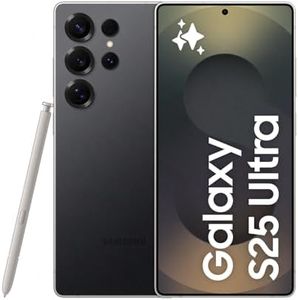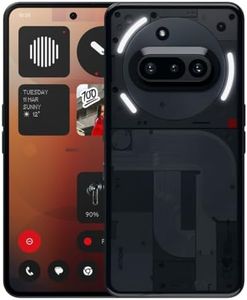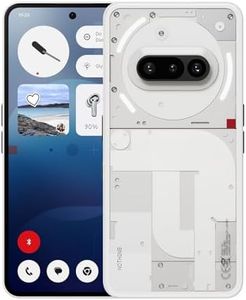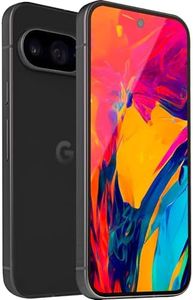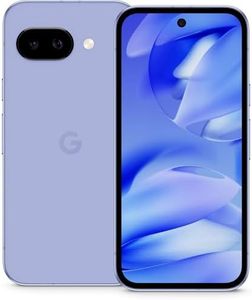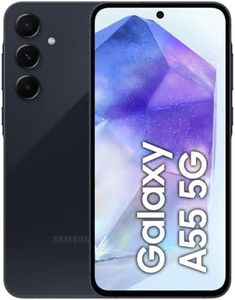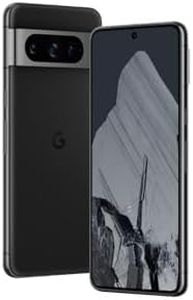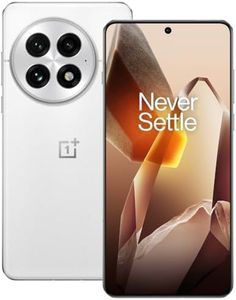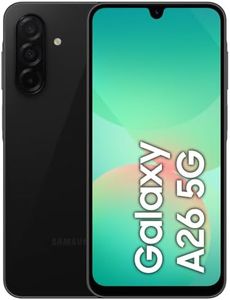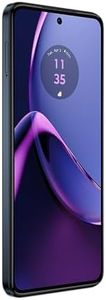We Use CookiesWe use cookies to enhance the security, performance,
functionality and for analytical and promotional activities. By continuing to browse this site you
are agreeing to our privacy policy
10 Best Camera Mobile Phones
From leading brands and best sellers available on the web.Buying Guide for the Best Camera Mobile Phones
When choosing a mobile phone for its camera, it's important to consider what types of photos and videos you hope to capture. Think about whether you'll mostly take casual snapshots, portraits, night-time photos, or action shots. Understanding your needs will help you navigate through the technical specifications and pick a phone camera that best supports your photography habits. Always remember: good camera performance isn't just about one detail—it's about how various features work together.Megapixels (MP)Megapixels tell you how many millions of tiny pixels make up the photos a camera takes. More megapixels usually mean more detailed pictures, which can be important if you want to print large photos or crop images while editing. However, more isn't always better; high megapixel counts on small sensors can introduce noise, especially in low light. For casual sharing and social media, 12 to 16 MP is often plenty; if you plan to zoom and crop a lot, look for cameras with higher megapixels while also considering other factors like sensor quality.
Aperture (f-number)Aperture, often listed as an f-number like f/1.8 or f/2.2, refers to how wide the camera lens opens to let in light. A lower f-number means a wider opening, which lets in more light and is helpful for low-light situations and creating a blurry background effect. Cameras with a lower f-number are better for night photos, portraits, and artistic shots, while higher f-numbers may be less effective in dim conditions. Consider lower apertures if you often shoot in places with less light.
Image StabilizationImage stabilization helps reduce blur in your photos and videos caused by shaky hands or movement. There are two main types: optical (hardware-based) and electronic (software-based). Optical stabilization is especially useful in low light or when zooming in, as it helps keep the picture steady. Electronic stabilization is more common and helps mostly in videos. Choose optical stabilization if you want crisp photos in many situations, especially indoors or at night.
Sensor SizeThe sensor size is the physical size of the area inside the camera that captures light. Bigger sensors generally capture better quality images with better color and less noise in dark settings. In phones, sensors tend to be small, but some models offer larger-than-average sensors for superior photography results. If you prioritize the best possible quality, especially in difficult lighting, lean toward options that highlight larger sensors.
Number of LensesMany smartphones now have multiple lenses, such as wide, ultra-wide, telephoto (for zoom), and macro (for close-ups). More lenses add versatility, letting you shoot from different perspectives without extra gear. If you want more creative options and flexibility, look for phones with at least a wide and an ultra-wide lens. For maximum flexibility, consider phones that also include telephoto and macro lenses, but if most of your shots are standard, a good single or dual-lens setup may meet your needs.
Video CapabilitiesVideo capabilities can include maximum resolution (like 1080p or 4K), frames per second (fps), and extra features like slow motion or time-lapse. Higher resolutions and frame rates mean smoother, clearer videos but also take up more storage. If video is important to you, especially for social media or personal projects, look for higher resolutions and extra features. For simple everyday clips, standard HD (1080p) with basic stabilization is usually enough.
Software FeaturesSoftware features like night mode, portrait mode, and AI enhancements can greatly improve your photos without you needing advanced skills. These tools automatically adjust settings for you, helping in tricky situations like low light or fast movement. If taking great photos effortlessly is important, check for phones with strong built-in photo software and easy automatic modes.
